Have you met... HilbertRaum
Have you met... HilbertRaum
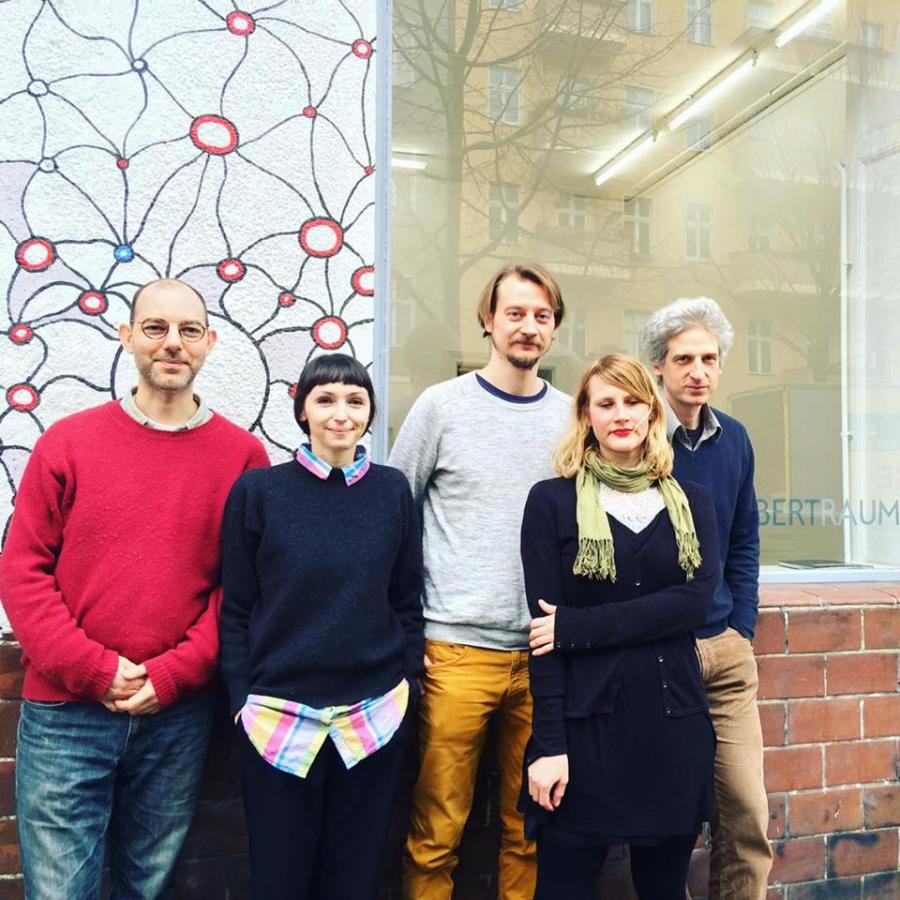
Although only a little over a year old, HilbertRaum gives out the confident vibe of a place that has been here for ages. Behind this young independent project space is a well-organised group of 16 Berlin-based artists, who take turns curating two-week exhibitions throughout the year, running an open, undetermined and evolving structure. Their projects incorporate a broad range of painting, photography, sculpture, video, installation and performance, always leaving space for new possibilities and surprises.
We headed over to HilbertRaum's address in Neukölln for a cup of coffee with one quarter of 'Hilberts' – Feriel Bendjama, David Benforado, Tobias Sternberg and Daniel Wiesenfeld – and discovered some interesting things about the collective and their recipe for success.
Let us start at the beginnings of this project space.
Daniel: I approached four members. Tobias, David and I had our studio spaces next to each other. I met Feriel through David. We wanted to have a situation where artists can connect, exchange and show their work, and have a space that is for artists without any commercial obligations.
Tobias: Daniel had an idea what he wanted to do, but there was no space. When he asked me, my first feeling was that there is too much work, so I would only ever look at this if we promised to make it simple. Between his enthusiasm and my skepticism we found a very workable structure. We figured out a way for all of us to keep our careers going and not having to spend a lot of time on meetings and other stuff. So we went to find a space, and invited more members.
David: We wanted to have a space to show our work without having to apply to galleries, because our options were project rooms-cafes, where you don't always want to exhibit your work, and galleries that are bombarded with artists' applications. So we thought about renting a space and showing our work there. And then we started thinking about how this can work or not, and eventually we decided to invite more people. Then we finally found this space. We had meetings every week for six months. We've put a lot of work into it, so what you see as natural and relaxed is because we have a very solid foundation. This was happening 6 months before we opened the space. Plus another 3 months looking for a space.
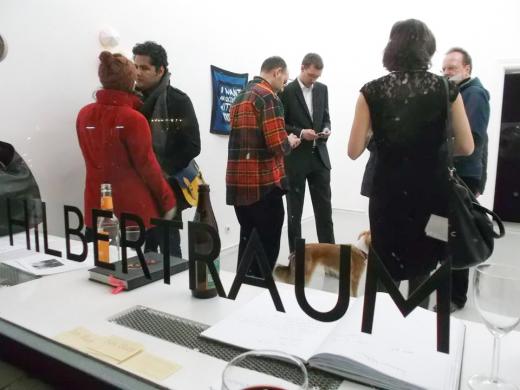
From the opening of "1 Jahr HilbertRaum", 2016
What brought this 16-member team together?
Tobias: We didn't start this together because we had a common vision. We are all artists and we wanted to have the experience of curating the way artists want to curate. Then we invited people whose art we like, and whose art is different from ours, so that we have diversity. We have all kinds of arts and attitudes, people of different ages, about 50/50 men and women, 50/50 Germans and foreigners.
What is your curatorial strategy?
Tobias: We have a very strict framework, a set of rules that we follow, and they are purely practical. They don't say anything about what you should show. These rules make it very easy for everyone to organise the shows. When each of us organises a show we have complete freedom to show whatever we want. Anything. And we also have the full responisibility for making it work. We can ask each other for help, but we cannot demand it. All the practical things are very strict, but because we have this framework, we can really do whatever we feel like. That is the curatorial idea – to allow the artists to fulfill their vision.
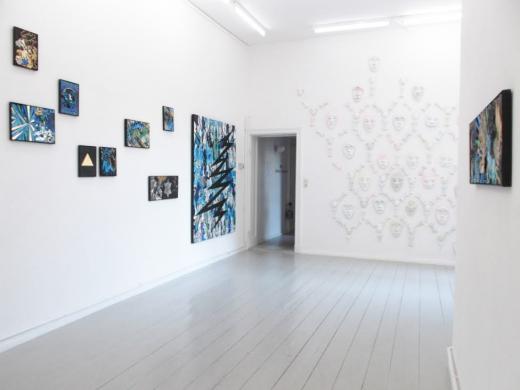
Exhibition view, "Jokes Lies and Prophesies", Maria Bajt & Kuno Ebert, 2015
Why the name "HilbertRaum"?
Daniel: A friend who is a quantum physicist wrote a book. For this book he asked 20 questions to quantum physicists, and they all had different opinions on the matter. Right now, the way it is, interpretation of it really is interpretation, how your personality is, how you see things, what your focus is. When I read these interviews, the word 'Hilbertraum' – 'Hilbert space' – popped up again and again. Hilbertraum is basically abstract mathematical space that was developed by David Hilbert. It's an indefinite abstract space in which these calculations take place. With quantums the location and the momentum is basically in a cloud of probability. It is so complicated that you have to have this multidimensional space. And I just found it funny – nobody knows this word except physicists and mathematicians. Since we really didn't know what this will turn out to be, and we wanted it that way, we wanted the element of surprise, it was for us like a philosophy, but also a joke on this idea of – we are all in Hilbert space. The world is Hilbert space. And we're moving in these strange unforseen ways. We just wanted to embrace this open structure that allows for possibilities and surprises.
How do you manage to split work among 16 people?
Tobias: In 14 months, each curates two shows. Apart from this, other work has to be done. I've done a lot of organising. Daniel takes care of money. Feriel does all the web work and the promotional work, which is quite a big bit. And others do some other things. You can't split everything equally, and some things have to be done by one person. Maybe we take turns later on. We try to make sure that we are not overwhelmed. The idea is that this shouldn't be instead of art career, but something we can do together with our art career.
Feriel: For me one very important and relaxing thing is that we don't have to meet every month or every week. We aren't meeting at all; maybe once a year. We don't have to discuss our decisions, everything goes pretty much naturally, and that takes the pressure off.
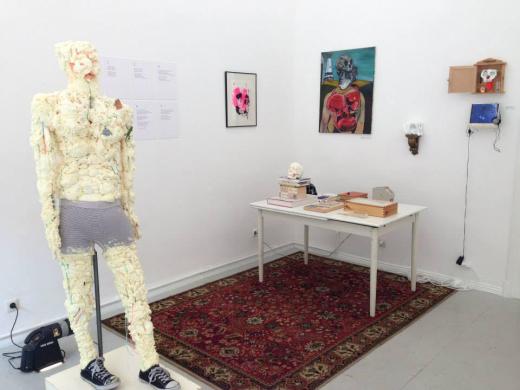
Exhibition view: "Strategic acts of seeing and knowing and not", work by Juan Arata, 2015
Does this space have any influence on your artistic work? Does it help you in terms of visibility?
David: It helps a lot because you're also networking while you're exhibiting with others. And you see yourself, your work against other people's work, and that makes you better, I think.
Daniel: The space itself is like a canvas or medium. You don't only think about your work, but also of the work in this particular space, and that informs what you're going to do too. It's very nice to have space you can always return to and test.
Feriel: I discovered something very interesting and refreshing in curating. While I was trying to curate a show and to interact with the artist, I felt big responsibility towards the artist I selected, but it was also great to concentrate on their needs and expectations. This was very freeing.
What advice would you give to someone who wants to follow HilbertRaum's path?
Tobias: I would say: find a group of people but don't try to agree on everything. Create a space where disagreement doesn't become a problem.
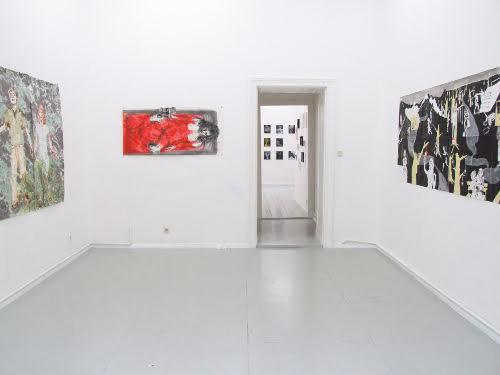
Exhibition view, "The Sky Is Falling", Hannah van Ginkel, Daniel Wiesenfeld, 2015
Can you share with us some of your future plans / upcoming projects?
Tobias: It's really exciting that several of us are reaching out and planning collaborations with galleries and project spaces all over the world. This is also something that we don't have to sit down and agree on it together, it's enough that one of our members knows someone in another city and makes a connection. We're going to have a lot of exchanges and swapping spaces.
Daniel: We will have events on Tuesdays, in between two shows when the gallery space is empty, and we will open it for performances, events, lectures, music, film nights... So far we still have a lot of empty space because people have to find what they want to do here.
David: We are also planning something with another artist who is part-time curating. We want to do an exchange and organise discussions with artists from Budapest.We will do a joint exhibition in Budapest, and hopefully it will all happen this year.
* * * * *
HilbertRaum / Reuterstr. 31, 12043 Berlin, U Hermannplatz / more info